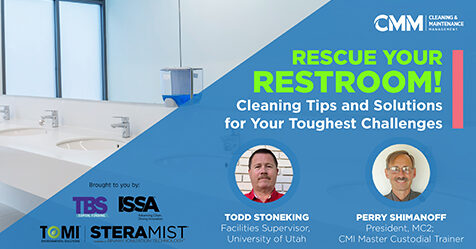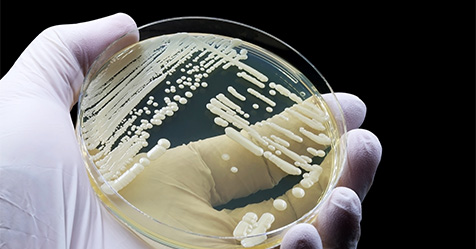Sustainability continues to be top of mind for many consumers, including those making vacation plans. A recent survey from online travel platform Booking.com revealed that 75% of global travelers want to travel more sustainably in 2024.
When booking a hotel or purchasing a product, consumers are also looking for a transparent sustainability commitment—with 84% of customers admitting that poor environmental practices would alienate them from a brand or company, according to the 2023 State of Sustainability Survey released by Forbes Research. Hospitality facilities have many opportunities to operate more sustainably, and restrooms should top their list. Restrooms in hotels and other venues can waste an exuberant amount of water, energy, and paper products. Sustainable restrooms are not just the latest fad—they are designed with specific intentions to save natural resources and safeguard the earth’s ecosystems. Even simple restroom adjustments can create a big environmental impact and reduce a facility’s overall carbon footprint.
If you haven’t already, now is a good time to take a closer look at your restroom’s operations. Operating with sustainability in mind can conserve resources and minimize waste—while still providing a pleasant restroom experience to boost customer satisfaction and brand image.
1. Switch to sustainable toilet tissue
An easy restroom adjustment is to swap your current toilet tissue with a sustainable brand. Look for brands with certification from the Forest Stewardship Council® (FSC). This certification
guarantees that the products come from forests managed by strict environmental, social, and economic standards.
In addition, opt for tissue paper that prevents clogs. Sustainable toilet paper with built-in enzymes that eat away at bacteria in pipes can reduce the risk of unsightly backups and plumbing problems. This helps avoid pricey repairs and messy situations that could turn off guests.
2. Reduce water consumption
A simple and obvious way to conserve water in restrooms is to monitor sinks and toilets for leaks and fix any problems immediately. According to the U.S. Environmental Protection
Agency (EPA), a leaky faucet that drips at the rate of one drip per second can waste more than 3,000 gallons of water per year.
Inefficient fixtures are as much a problem as leaky ones. Implement water-saving fixtures such as automated faucets, and low-flow toilets and urinals. These fixtures limit water waste and
prevent restroom patrons from leaving the faucet running for hours. Also consider installing faucet aerators (mesh screens attached to the end of a faucet) which help control the water stream and
reduce flow by mixing air bubbles with the water.
3. Evaluate lighting
According to the U.S. Department of Energy, lighting use accounts for 20% of total energy consumption in commercial buildings. Many facilities have lighting on 24 hours a day in the restroom, even when it’s empty. Installing lighting controls that automatically switch off lights when restroom patrons leave the room is a simple retrofit option that can save a significant amount of energy and reduce costs.
Replacing conventional lightbulbs with LED bulbs is another simple option. According to Energy Saver, the U.S. Department of Energy’s consumer resource for energy savings, LED bulbs
use up to 90% less energy, produce less heat, and last up to 25 times longer than traditional bulbs.
4. Use green cleaning products
Many traditional cleaning products contain volatile organic compounds (VOCs), chemicals which are emitted as gases and can negatively affect health and pollute the indoor air.
VOCs can also harm the environment when they are rinsed down the drain. Luckily, safer products are available that are healthier for the planet, janitorial staff, and facility guests.
Research products thoroughly before buying and beware of greenwashing tactics. A recent study from the Environmental Working Group (EWG) found that many cleaning products—even some labeled “green”—release hundreds of VOCs that may impact human health. Look for cleaning products with labels that indicate they are endorsed or certified by Green Seal®, the EPA’s Safer Choice program, ECOLOGO®, and Design for the Environment (DfE). Opt for recyclable or biodegradable packaging to avoid contributing to the growing plastic pollution problem.
5. Foster a sustainable culture
Taking simple steps to make hospitality restrooms more sustainable is a great way to save natural resources and provide guests with a positive experience. However, you will have more
success reaching your sustainability goals if you involve others. Encourage your cleaning staff to become involved in environmental initiatives and seek feedback from facility guests to learn
what changes they would like to see to promote sustainability in the building.
Prioritizing sustainability initiatives with concrete actions shows guests you care about their experience and your facility’s impact on the environment. Relying on renewable sources, increasing efficiency, reducing energy consumption, and using healthier restroom products will help reduce your carbon footprint while promoting a positive brand image.




